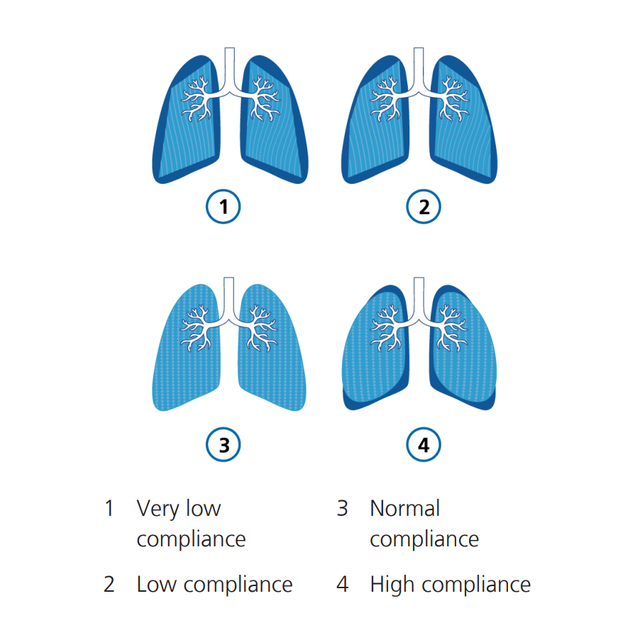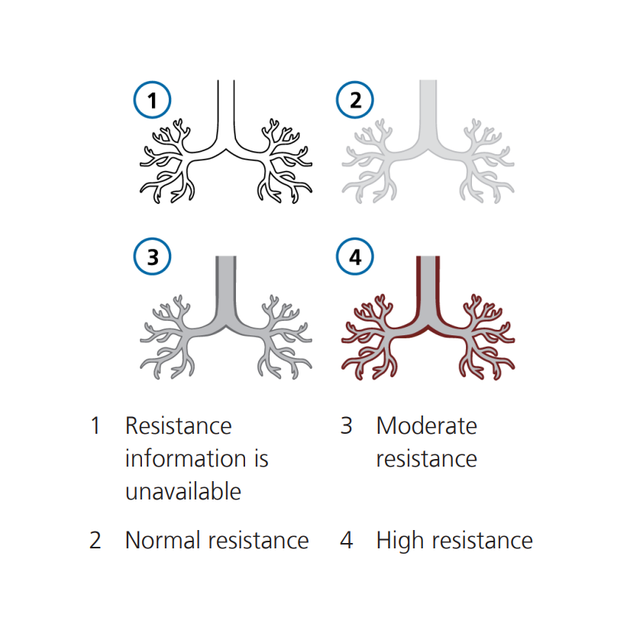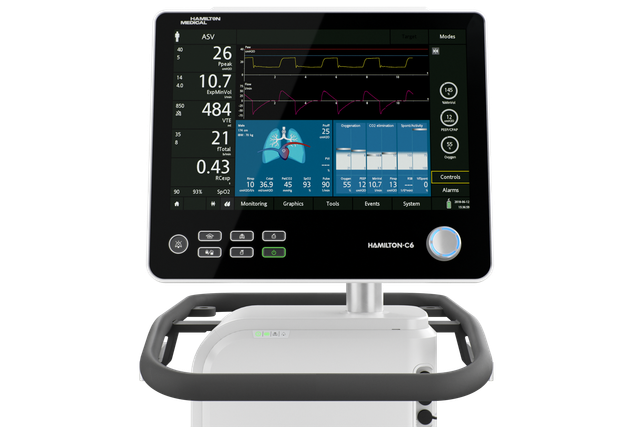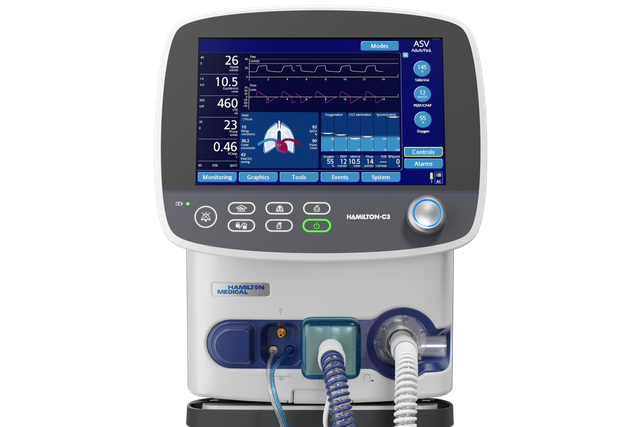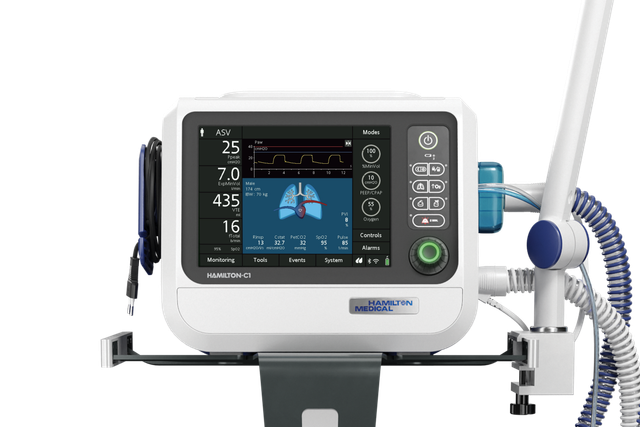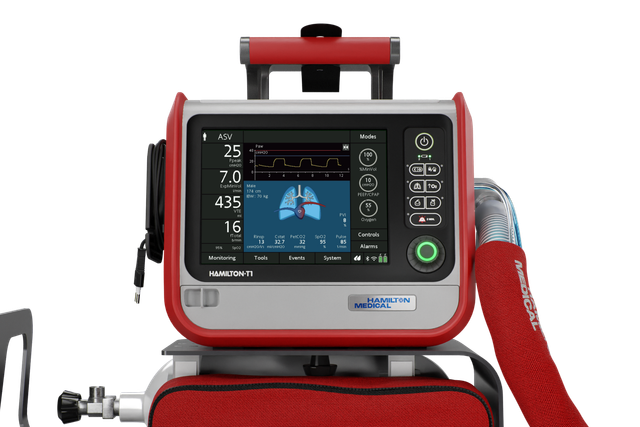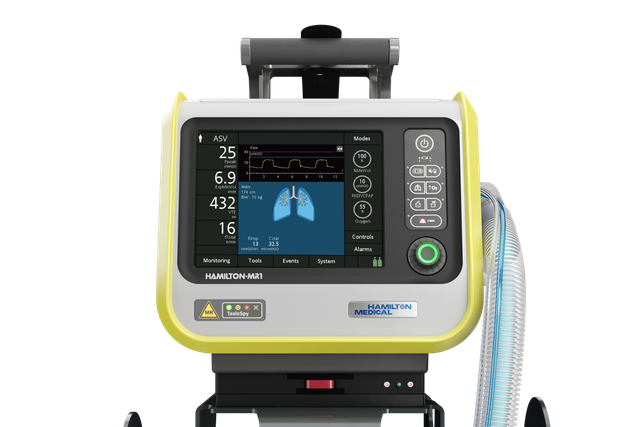
Наша концепция. Единый интерфейс для управления всеми устройствами
Все аппараты ИВЛ Hamilton Medical, которые используются в отделении интенсивной терапии, кабинете МРТ или при транспортировке, имеют одинаковый интерфейс пользователя.
В системе Ventilation Cockpit сложные данные отображаются в виде интуитивно понятных графиков.
Вдох. Графическое представление сложных данных
Исследование показало, что одного лишь отображения числовых показателей и кривых недостаточно для предоставления врачам информации в оптимальном объеме (
При создании панели системы мониторинга Ventilation Cockpit мы брали за основу кабины самолетов, в которых интегрированные сложные данные визуализируются простым способом.
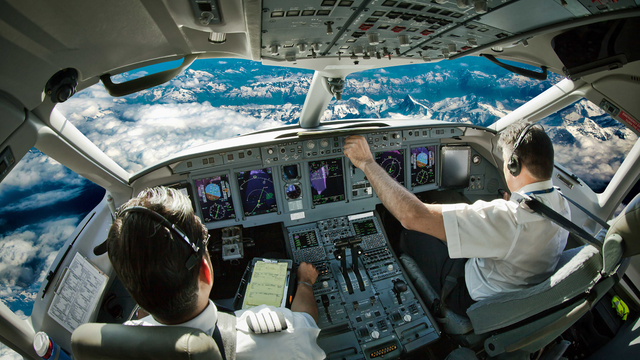
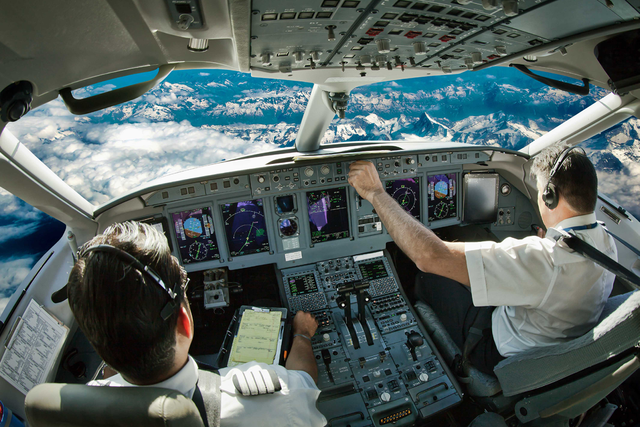
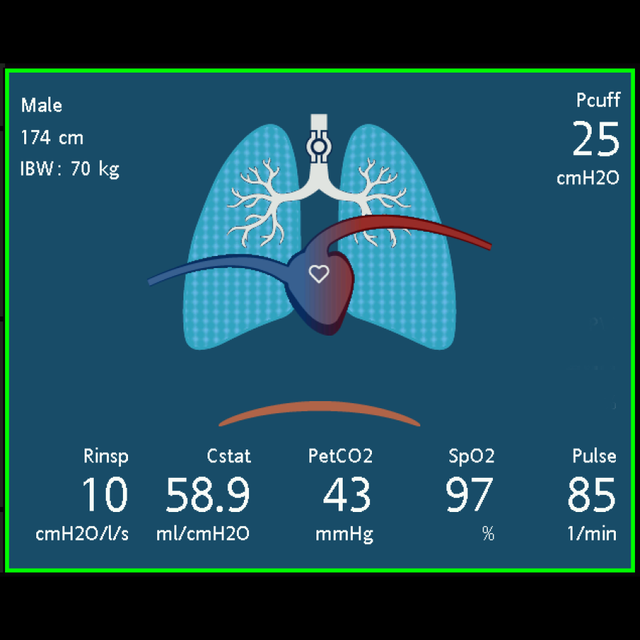
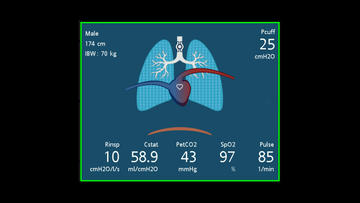
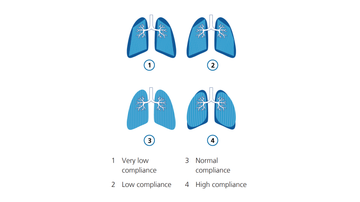
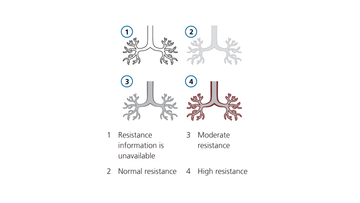
Скажет больше, чем тысяча слов. Панель «Динамические легкие»
На панели «Динамические легкие» визуализируются мониторируемые данные, указанные ниже, в режиме реального времени. Если все значения находятся в допустимом диапазоне, вокруг панели отображается рамка зеленого цвета.
Легкие расширяются и сжимаются синхронно с фактическим дыханием на основе сигнала проксимального датчика потока. Показанный размер легких соответствует предполагаемому размеру на основе роста пациента.
На анимированной диафрагме ниже легких показаны спонтанные дыхательные усилия пациента.
Если подключен и используется встроенный контроллер давления в манжете IntelliCuff (
На бронхиальном дереве отображается значение сопротивления для каждого дыхательного цикла относительно роста пациента. Цвет бронхиального дерева указывает на относительную степень сопротивления.
Кроме того, на экране отображаются цифровые значения.
Форма, которую принимают легкие, изменяется при каждом дыхательном цикле в зависимости от податливости («Сстат») относительно роста пациента. Кроме того, на экране отображаются цифровые значения.
При установке и активации опции «SpO2» (
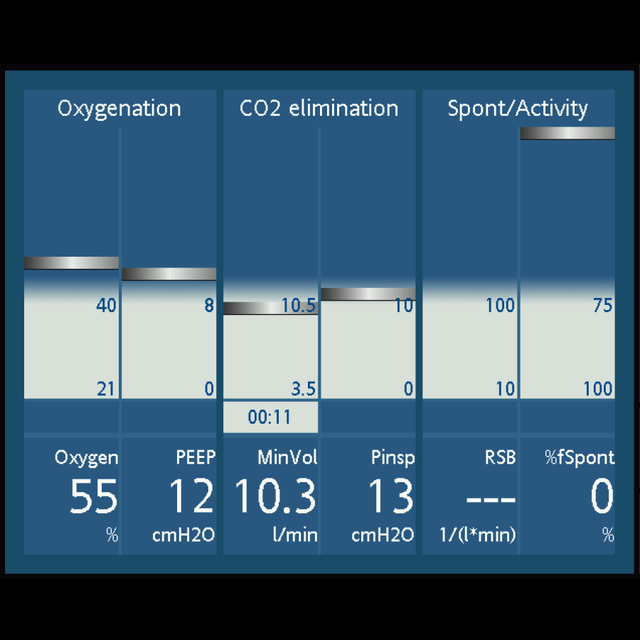
Готовы отлучить пациента? Панель «Состояние вентиляции»
На панели «Состояние вентиляции» отображаются шесть параметров, которые связаны с зависимостью пациента от аппарата ИВЛ, в т. ч. оксигенация, выведение CO2 и дыхательная активность пациента.
Плавающий в пределах столбца индикатор отображает значение определенного параметра. Когда индикатор находится в серой зоне (отлучение), запускается таймер, который показывает, как долго это значение находится в зоне отлучения.
Панель окаймлена рамкой зеленого цвета, если в зоне отлучения находятся все значения. Это означает, что можно начинать тесты спонтанного дыхания.

Отзывы клиентов
Как показывает опыт, панель «Динамическое легкое» очень полезна: не все могут легко разобраться в цифрах. Это особенно касается начинающих терапевтов. Но иллюстрации всегда просты и наглядны.
Крейг Джолли
координатор образования в сфере лечения
медицинский центр Лаббокского университета, штат Техас, США
Доступность
Система мониторинга Ventilation Cockpit ‑ это стандартная функция всех наших аппаратов ИВЛ для интенсивной терапии.
Список литературы
Сноски
- A. Доступно как встроенное устройство для аппаратов ИВЛ HAMILTON‑C6/G5/S1 и как автономное устройство для аппарата ИВЛ HAMILTON‑C3
- B. Параметр недоступен на аппаратах ИВЛ HAMILTON‑MR1


